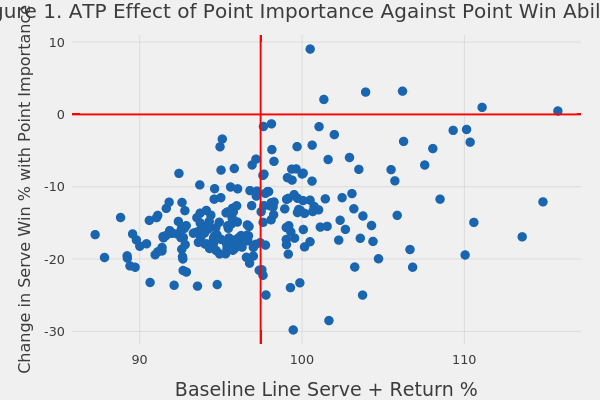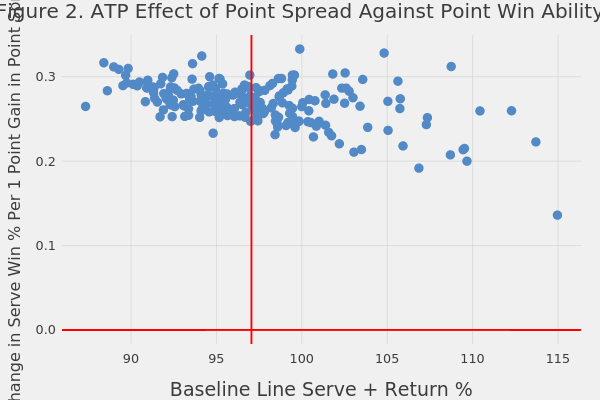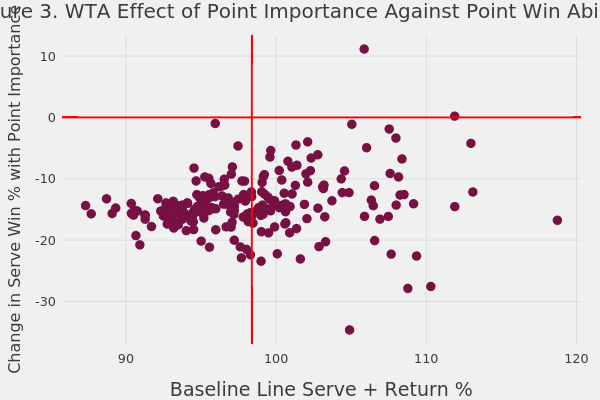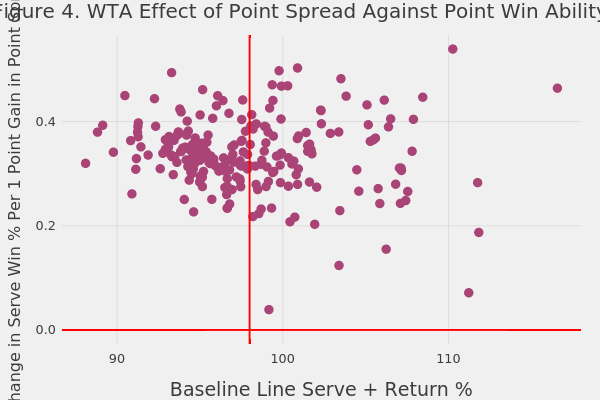Klaassen & Magnus's 22 Myths of Tennis— Myth 17
02 Jul 2016One of the matches we can look forward to—rain or shine—on Day 6 of the Wimbledon Championships is World No. 2 Andy Murray against Aussie John Millman. Murray’s run at Wimbledon is an especially interesting one because it is the first Grand Slam since Murray’s reunion with legend coach Ivan Lendl. The on-again off-again partnership provides an interesting natural experiment of the “coach effect” and gives us one more reason to look back at one of my favorite tennis memes of all time.
Lendl’s extreme stoicism is more than just fodder for jokes though. It is one of the ingredients that many point to when asked how Murray managed to keep his composure under the spotlight of a nation at the 2012 Wimbledon Championships and his follow-up attempt in 2013, where he eventually took home the title.
The dynamic between Lendl and Murray’s personalities—the one being as close to the emotional profile of a rock as a person can come; the other prone to emotional ups and downs on court that can make Fabio Fognini look like a pillar of mentality—puts a focus on player temperament and how it may or may not influence performance.
Although personalities of all stripes can be found among professional players, there is a general belief that a key to being a champion is being able to control your emotions when the heat is on. But is it really true that the best players are the most cool-headed?
Myth 17 “Top players are more stable than others”
With the next in our series of tennis myths discussed in Analyzing Wimbledon, Klaassen and Magnus turn to the question of player stability and how it relates to quality. Here, “stability” refers to a characteristic of mentality and to call a player. “Stable” is just another way of saying the player is cool-headed. K&M carry out analyses to see if the best players are also the most emotionally stable.
But it’s not like one can go out and measure a player’s emotional stability with a yardstick. Emotions aren’t as tangible as a player’s height. So what do K&M do?
Rather than look at mentality directly, K&M look at it indirectly. They suppose that a player’s mentality will manifest in the way he or she responds to a game situation. And, if emotions get in the way of performance, the players who let emotions get in the way will choke when playing under more pressure. This means that seeing how player performance is influenced by the match situation (e.g. are they facing a break point in a match-deciding set? are they up a break in the second? etc.) can reveal their mental stability.
There are two match situations K&M consider in their investigation into myth 17. The first is the importance of the point, which is the change in the expected chance of a player winning a match if the current point is won versus if it is lost. Because importance increases as a point has more potential to influence the outcome of the match, it is essentially a proxy for pressure.
The second situation they consider is the outcome of the previous point, looking at whether the player won the last point or not. This is K&M’s way of testing the influence of momentum.
To see if the best players are the most stable, K&M use historical Wimbledon data to test how the effect of importance and the effect of the previous point vary with a player’s ranking. They find that, in general, players are negatively influenced by point importance, that is, they perform somewhat worse in more difficult game situations than in easier ones. However, they also find that this effect is player-dependent and a player who is more highly ranked than his or her opponent is less affected by importance.
Regarding momentum, they find winning the previous point has a positive influence on the average player—a mini hot hand effect. They do not find that this varies with player ranking. So winning mood effects appear to be less indicative of differences in player mentality with quality.
Revisiting Myth 17
K&M’s analyses suggest that pressure and momentum are both real effects in tennis but that their influence can vary from player to player. I was interested to see how variable they effects are in today’s game and if we can still see that the best players are the least affected by the game situation.
To do this, I looked at point-level results for the 2014 and 2015 Grand Slams. For each player, I estimated a separate average for their performance on serve and return (their “baseline”). The sum of these two is what I use to measure a players quality. This is a bit different than K&M who use ranking to measure quality but I prefer thinking of quality in this way, since rankings can be flawed indicators of ability.
In the first plot below, I compare how point importance affects a player’s ability to win on serve and plot it against their baseline serve and return ability (“quality”). The pattern for ATP players in Figure 1 shows a wide spectrum of effects. Most players are, as K&M have shown, adversely affected by pressure but not all. There are some interesting exceptions like Nick Kyrgios, who actually performed somewhat better under pressure in 2014-2015. And Andy Murray and Novak Djokovic are both players who are impervious to point importance. (Note: Hover over a point to see which player it represents).
The positive trend in the point cloud indicates that the effect of point importance does tend to decrease as a player’s quality increases. Still, the relationship is a pretty noisy one.
To turn the same question to momentum, I use the set point spread. This is the difference in how many points more a player has won in a set than his or her opponent. Figure 2 shows the player-specific affects of momentum for the ATP. In general, being ahead in the score boosts player performance. However, this does tend to diminish with player quality as the downward moving cloud of points indicates. This suggests that the best players are the least prone to “winning mood” or “hot hand” effects. Still, no player in this group was free from some positive effect.
When the same analyses were applied to the women’s game, we see less of a relationship between point importance and player quality (Figure 3). Most players are similarly negatively affected by pressure. There are some interesting exceptions, Garbine Muguruza the most notable one whose performance on serve skyrocketed by 10 percentage points in 2014-2015 on the biggest points. But the exceptions that are found do not have any consistent link with player quality.
When we look at the link between momentum and player quality for the WTA, the story is more similar to what we find for the ATP. All players do better when ahead in the point spread, but the affect of the winning mood tends to diminish with player quality. Still, noisiness rules.
Summary
Player-specific estimates of how performance is influenced by pressure and momentum reveal that the best players seem to do the best job at forgetting the point situation. In other words, they, more than other players, play each point as though they were equally important. But these trends are not without a lot of variance and any one player can deviate from the norm by quite a bit. This should give us pause, in general, whenever we hear blanket statements about player mentality and performance in tennis.
Although the mentality story is complex, these analyses do show us that using point-to-point variation in performance is a useful way to look (indirectly) at player mentality. (My co-author, Martin Ingram, and I actually used this idea in a paper on the mental game in tennis that appeared at this year’s Sloan Conference.) Tools like these might never be able to tell us why the Lendl-Murray formula seems to work so well but they could still help to uncover some of the mysteries about the inner game of tennis.
If you liked this story, share it with your followers or follow this site @StatsOnTheT on Twitter.




